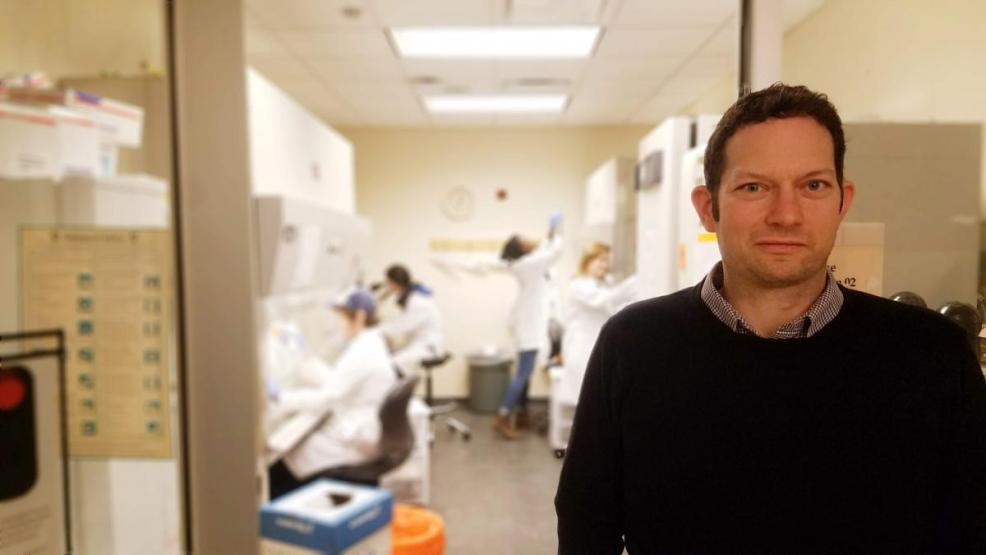Cancer Institute virologist Micah A. Luftig, Ph.D., was recently named a Fellow of the American Association for the Advancement of Science (AAAS) and was recognized for his contributions to biological science in the field of viral oncology at the AAAS meeting on February 16.
An associate professor of molecular genetics and microbiology and medicine, Luftig was elected for his work on the Epstein-Barr virus (EBV) and the temporal regulation of gene expression in viral-induced cancers.
“I’m interested in viral pathogenesis and immune response and how that differs between patients that do and do not go on to develop cancer,” said Luftig, who directs the Duke Center for Virology and runs an independent laboratory focused on EBV. “Where there are opportunities, we hope to translate those discoveries into therapeutic options.”
Luftig said he was inspired to pursue the study of viruses as an undergraduate at Louisiana State University in 1998 after sitting in on his virologist father’s work meetings as a child.
“In graduate school, I wanted to challenge myself with cancer biology and became very interested in this more complex interaction between viruses and cancer,” said Luftig, who graduated with a Ph.D. in Virology from Harvard Medical School in 2003 and then completed an EMBO long-term post-doctoral biochemistry fellowship at the Istituto di Ricerca di Biologia Molecolare (IRBM) in Italy, before joining Duke in 2007.
He’s received numerous grant awards over the course of his career, including those from the National Cancer Institute, the National Institute of Allergy and Infectious Diseases, and the American Cancer Society — many of them for his ground-breaking EBV research.
Most recently, he’s been the recipient of two five-year grants totaling over $4,000,000 from the National Institutes of Health for his research into how EBV drives infected-cell proliferation, survives, and evades the immune system.





